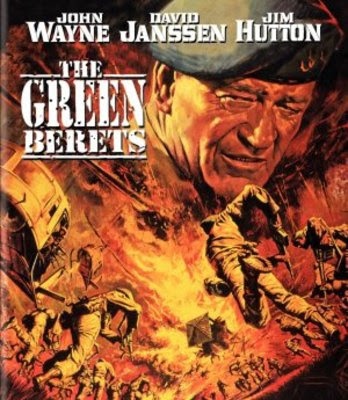Tuesday, April 17, 2012
The Anderson Platoon: Boots on the Ground
Why should I care about Pierre Schoendoerffer, the French filmmaker who died last month at age 83? His is hardly a household name. Few Americans will have heard of his films, which often deal unflinchingly with combat in Indochina. But one of them, The Anderson Platoon, copped an Oscar as best feature-length documentary of 1967. At a time when Americans were just waking up to the realities of the Vietnam War, Schoendoerffer gave them a picture -- up close and personal -- of what was happening to the grunts on the ground. It was a far cry from John Wayne’s flag-waving Vietnam epic of the following year, The Green Berets.
Schoendoerffer (unlike John Wayne) came by his knowledge of warfare honestly. Though he’d completed his own military service, he volunteered in 1951 to serve as a cameraman in Indochina, where the French were fighting to retain control of their former colonial empire. After three years, and a wound that landed him in a Saigon hospital, he finagled permission to parachute into Dien Bien Phu, site of a decisive battle that ended in the rout of the French by Vietnamese forces. Intending to chronicle the war, he found himself captured, threatened with execution, and marched hundreds of miles to a Vietnamese-run prison camp. Four months later, he finally won his release.
You might think Schoendoerffer would have had enough of Southeast Asia. But, as he said, "The earth of Indochina still clings to my soul, just like the mud of the trenches used to stick to my boots.” His 1965 film, The 317th Platoon, depicted fictive French soldiers and their Laotian allies trekking through the jungle. One year later, when American troops had replaced the French in Vietnam, Schoendoerffer returned to the country’s central highlands to capture in cinéma vérité style the daily doings of an American infantry platoon led by Lt. Robert Anderson, a black graduate of West Point. In the fall of 1966, the troops are shown as still largely optimistic—and the racial tension that will plague American units later in the war is virtually absent.
Schoendoerffer’s camera captures the platoon’s life in all its minutiae: soldiers taking communion; playing a gambling game; grappling with homesickness on an aimless trip to Saigon. But there’s the stuff of war too. Platoon members, mostly draftees, go on patrol; engage in firefights; uncover homemade Viet Cong weapons; try to live through missions whose goal eludes them. Along the way, some men get wounded, and a few of them die. After they’ve helped treat an injured local girl, one soldier sings a haunting blues dirge, “The St. James Infirmary,” and several others get tears in their eyes. “The St. James Infirmary” returns on the soundtrack at the close of the film, as a badly wounded black man clasps the hand of his white buddy before being evacuated by air. The film ends with a sunset silhouette as the men of the Anderson platoon watch the chopper, carrying its precious cargo, rise into the sky. A far cry from the hopeful dawn with which John Wayne would conclude The Green Berets, this sunset seems to portend nothing good. As narrator Schoendoerffer sadly notes, “The platoon is only a small pawn in a big game.”
Unlike The Green Berets (so grossly inauthentic that soldiers who saw it in ‘Nam used to throw beer cans at the movie screen), The Anderson Platoon conveys the unmistakable whiff of truth. Studiously unsentimental, it nonetheless brings home the meaning (and the meaninglessness) of the Vietnam conflict, one in which stoicism is a valuable trait but tough-guy heroics have no place.
Subscribe to:
Post Comments (Atom)


I've never been a huge Wayne fan, but I should probably see THE GREEN BERETS now. You've piqued my interest, lol. The only Wayne films I like are CHISUM and THE SEARCHERS; the former because of the great cult film cast and the latter... well, it's an important film of the western genre. I will say that Wayne's THE CONQUEROR (1956) is of vast cinematic importance on how NOT to do an autobiographical motion picture on historical tyrants. Viewed as a comedy, it's a classic.
ReplyDeleteI'm not a huge Wayne fan either, needless to say, but in films like Stagecoach and the Sands of Iwo Jima I can see where he got his iconic status. You might appreciate his last film, The Shootist, made when he was clearly dying and playing on that fact. It is surprisingly moving, thanks partly to a really strong performance by Ron Howard in one of his last big acting roles. Lauren Bacall and other interesting actors are in there too.
ReplyDeleteI am a huge Wayne fan, but The Green Berets is pretty indefensible, 'tis true. Thanks at least for pointing out The Shootist, one of the finest valedictory cinematic outings in the whole history of the medium.
ReplyDelete